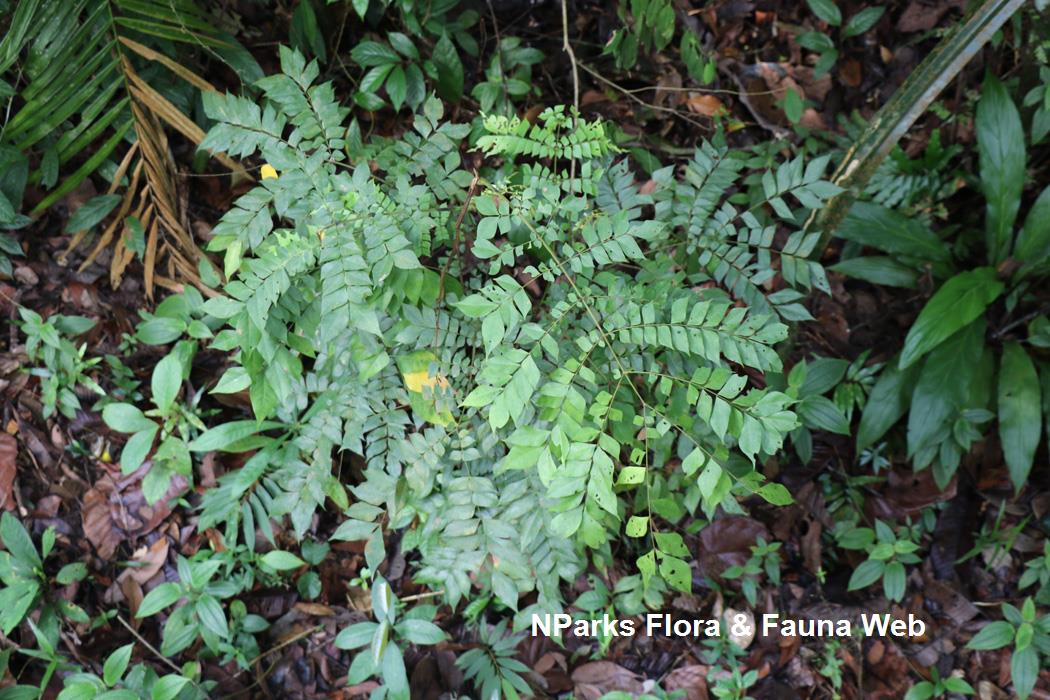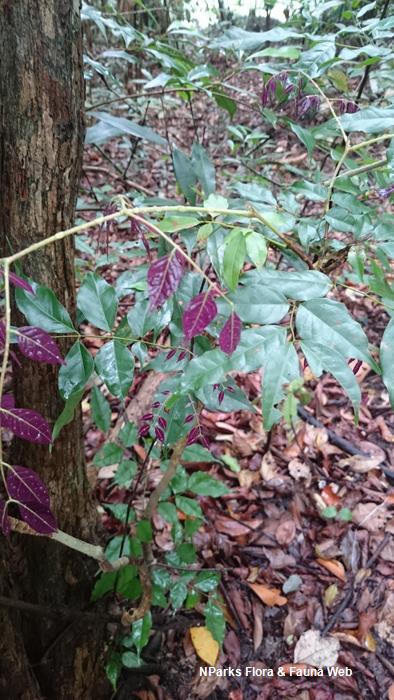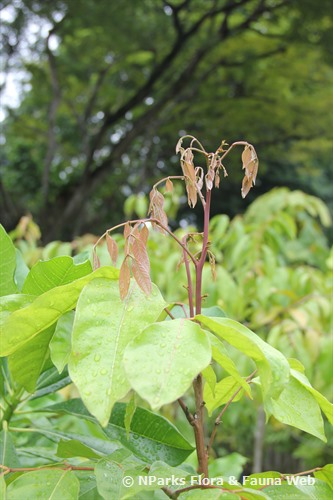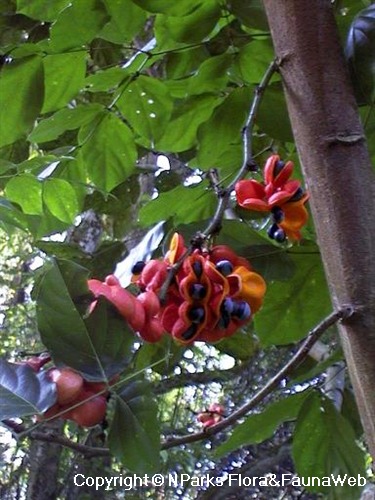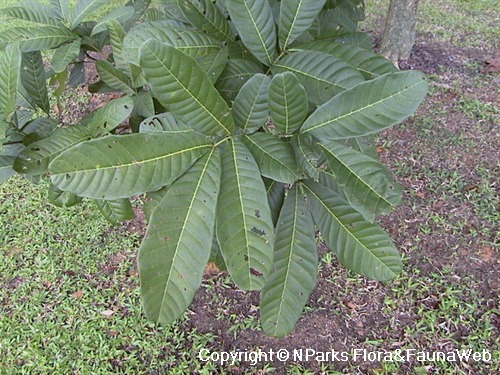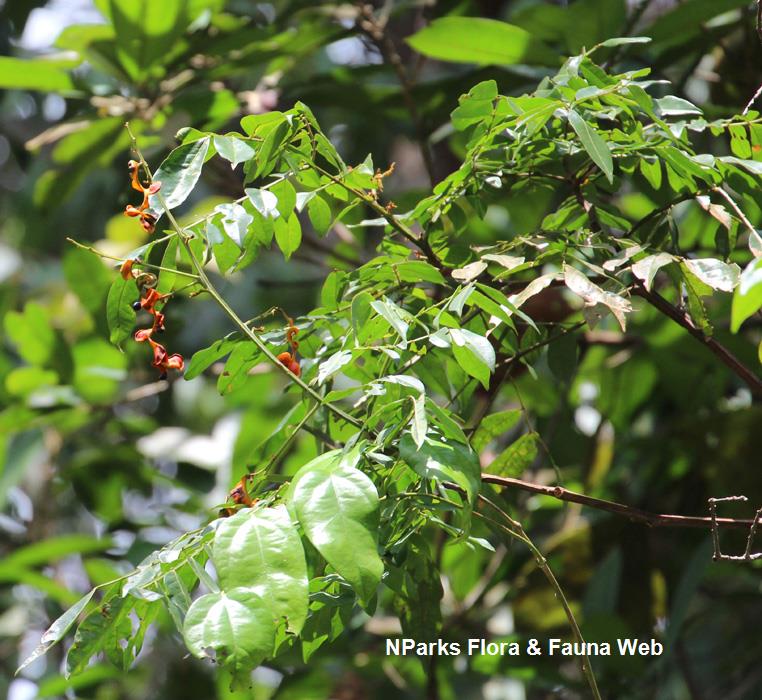
Back
Archidendron clypearia (Jack) I.C.Nielsen var. clypearia
| Family Name: | Fabaceae (Leguminosae) |
| Common Name: | Greater Grasshopper Tree, Petai Belalang, Chahar, 猴耳环 |
Name
Classifications and Characteristics
| Plant Division | Angiosperms (Flowering Seed Plants) (Dicotyledon) |
|---|---|
| Plant Growth Form | Tree (Medium (16m-30m)) |
| Lifespan (in Singapore) | Perennial |
| Mode of Nutrition | Autotrophic |
| Plant Shape | Irregular |
| Maximum Height | 22 m |
Biogeography
| Native Distribution | India to Borneo (including Singapore) |
|---|---|
| Native Habitat | Terrestrial (Primary Rainforest, Secondary Rainforest, Freshwater Swamp Forest, Disturbed Area / Open Ground) |
| Preferred Climate Zone | Tropical |
| Local Conservation Status | Native to Singapore (Least Concern (LC)) |
Description and Ethnobotany
| Growth Form | It is a much-branched and medium-sized tree up to 22 m tall. |
|---|---|
| Foliage | Its alternate, long-stalked, bipinnate leaves possess 3–14 pairs of leaflets. The lowermost leaflet bears 3–6 pairs of leaflets, while the uppermost bears 8–14 pairs of papery leaflets that are opposite, diamond-shaped, and 1–7.6 by 0.7–3.8 cm. The leaflets gradually decrease in size towards the lowermost leaflet. |
| Flowers | Its stalked flowers are white to yellowish, and develop up to 10 together in clusters. The clusters are arranged in shoots more than 30 cm-long, at the older leaf’s angles, or on leafless portions of twigs. |
| Fruit | Its fruits are orange and red, 1–1.5 cm wide, spirally twisted legumes that contain 4–10 seeds. Its seeds are black, oval, up 1 cm wide, and wrinkled when dry. |
| Habitat | It grows in open country, primary and secondary forests, peat swamp and swamp forests, up to 1,850 m altitude. It occurs locally in the vicinity of Mandai Road, Upper Pierce Reservoir, Bukit Kallang Reservoir, Nee Soon Swamp Forest, and Pulau Tekong. |
| Associated Fauna | Its flowers are pollinated by bees. |
| Cultivation | It can be propagated by seed. |
| Etymology | Greek archi, primitive; Greek dendron, tree; Latin clypearia, resembling the small round Roman shield, a reference to the use of the wood in making sheaths of weapons |
| Ethnobotanical Uses | Timber & Products: Sheaths of weapons are made using the wood. The bark is used to make hair shampoo, and in tanning of fishing nets. Others: The leaves are employed in the colouring and tanning of rattan, and reportedly used as cattle poison. |
Landscaping Features
| Landscaping | It is occasionally planted as an ornamental tree along roads and in parks. Its tolerance for damp conditions makes it a plant suitable for a wide range of soil moisture conditions. |
|---|---|
| Desirable Plant Features | Ornamental Foliage, Ornamental Fruits |
| Landscape Uses | General, Suitable for Roadsides, Parks & Gardens, Small Gardens |
| Thematic Landscaping | Naturalistic Garden, Marsh Garden |
Fauna, Pollination and Dispersal
| Pollination Method(s) | Biotic (Fauna) |
|---|---|
| Seed or Spore Dispersal | Biotic (Fauna) |
Plant Care and Propagation
| Light Preference | Full Sun, Semi-Shade |
|---|---|
| Water Preference | Moderate Water |
| Plant Growth Rate | Moderate |
| Rootzone Tolerance | Moist Soils, Waterlogged Soils (Drains Site), Well-Drained Soils, Fertile Loamy Soils |
| Propagation Method | Seed |
Foliar
| Foliage Retention | Evergreen |
|---|---|
| Mature Foliage Colour(s) | Green |
| Mature Foliage Texture(s) | Papery |
| Foliar Type | Compound (Even-Pinnate) |
| Foliar Arrangement Along Stem | Alternate |
| Foliar Attachment to Stem | Petiolate |
| Foliar Shape(s) | Non-Palm Foliage |
| Foliar Venation | Pinnate / Net |
| Foliar Margin | Entire |
| Leaf Area Index (LAI) for Green Plot Ratio | 3.0 (Tree - Intermediate Canopy) |
Floral (Angiosperm)
| Flower & Plant Sexuality | Bisexual Flowers |
| Flower Colour(s) | White, Yellow / Golden |
|---|---|
| Flower Grouping | Cluster / Inflorescence |
Fruit, Seed and Spore
| Mature Fruit Colour(s) | Red, Orange |
|---|---|
| Fruit Classification | Simple Fruit |
| Fruit Type | Dehiscent Dry Fruit , Legume / Pod |
Image Repository
Others
| Master ID | 1430 |
|---|---|
| Species ID | 2723 |
| Flora Disclaimer | The information in this website has been compiled from reliable sources, such as reference works on medicinal plants. It is not a substitute for medical advice or treatment and NParks does not purport to provide any medical advice. Readers should always consult his/her physician before using or consuming a plant for medicinal purposes. |

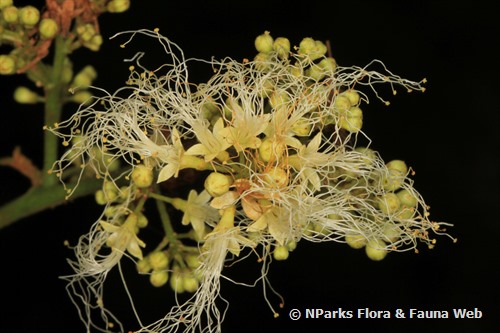
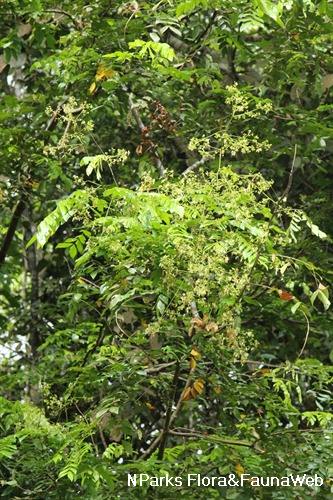
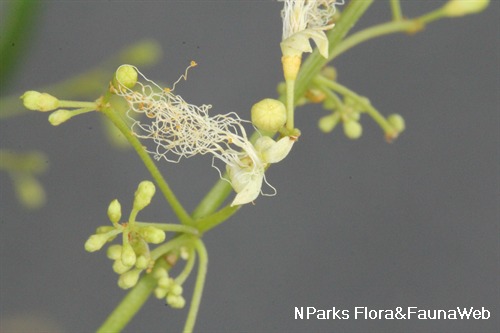
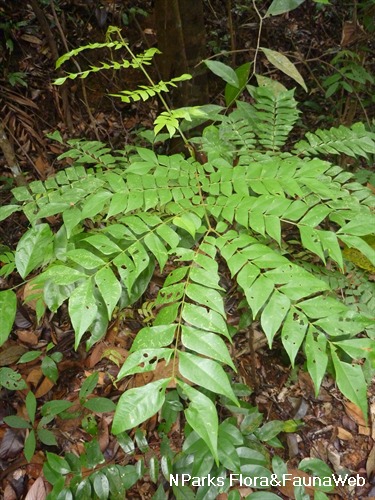
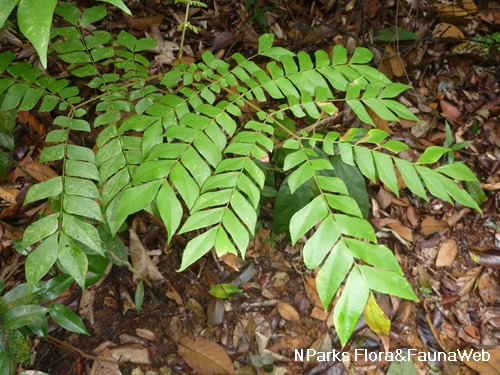
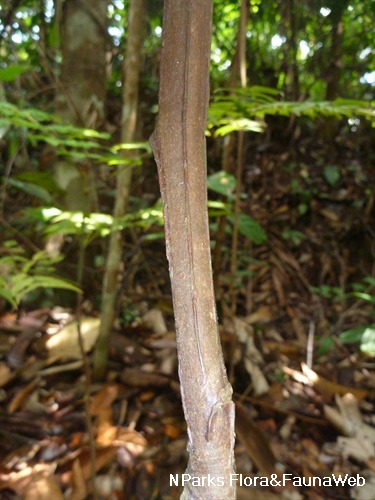
_lowres.jpg)
